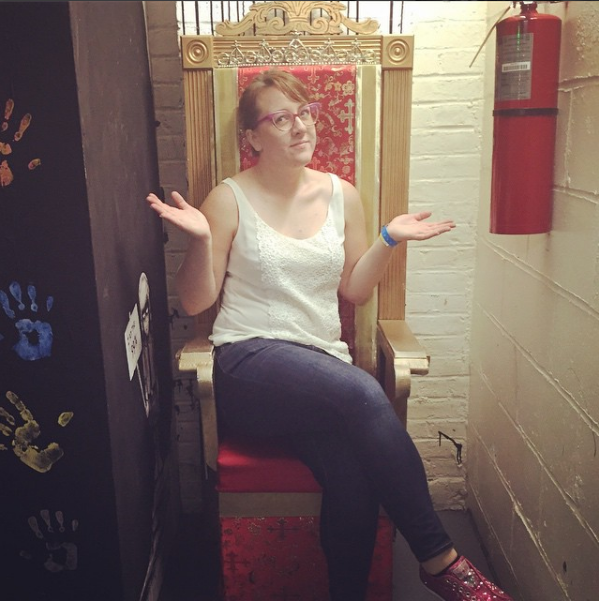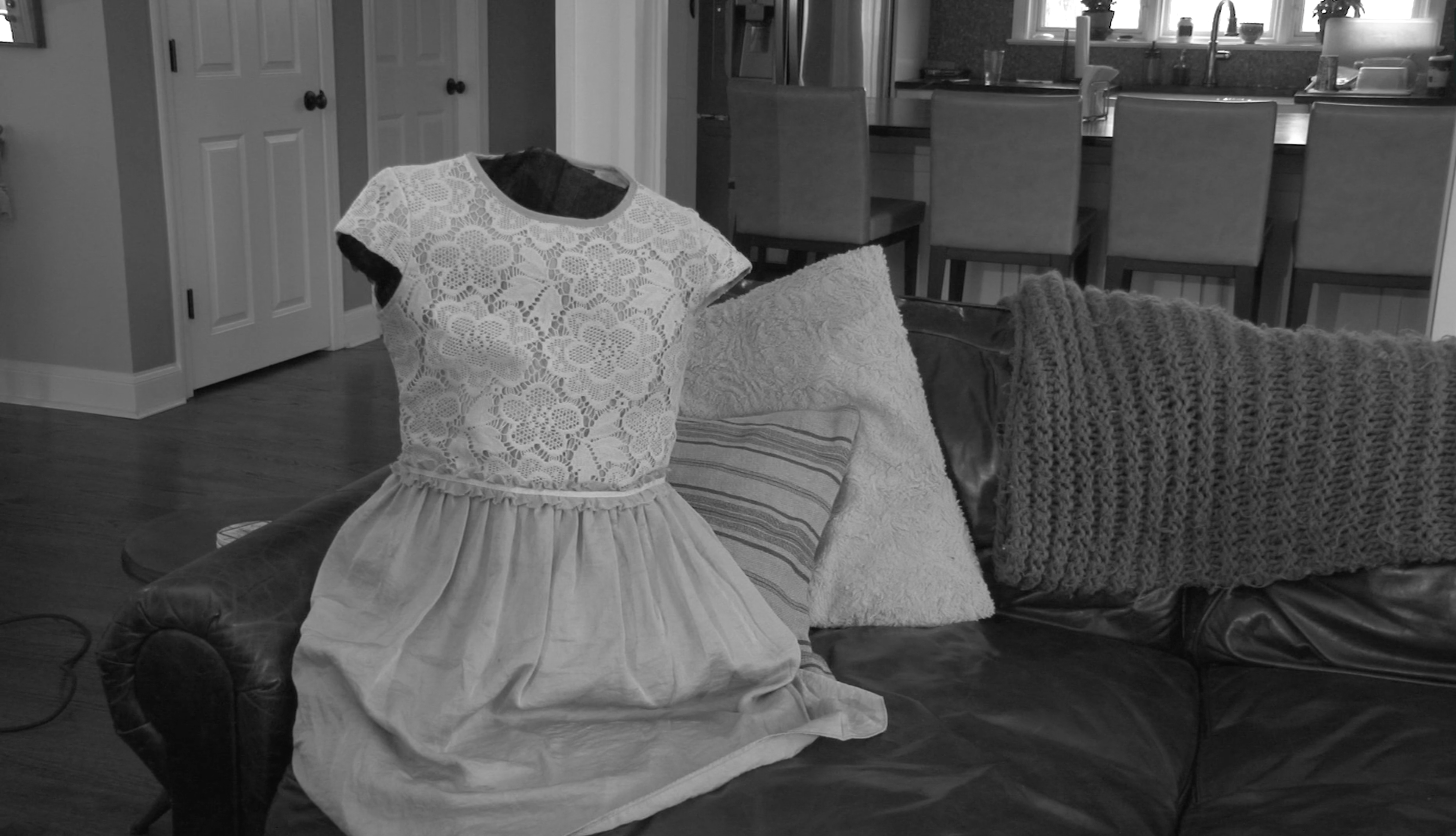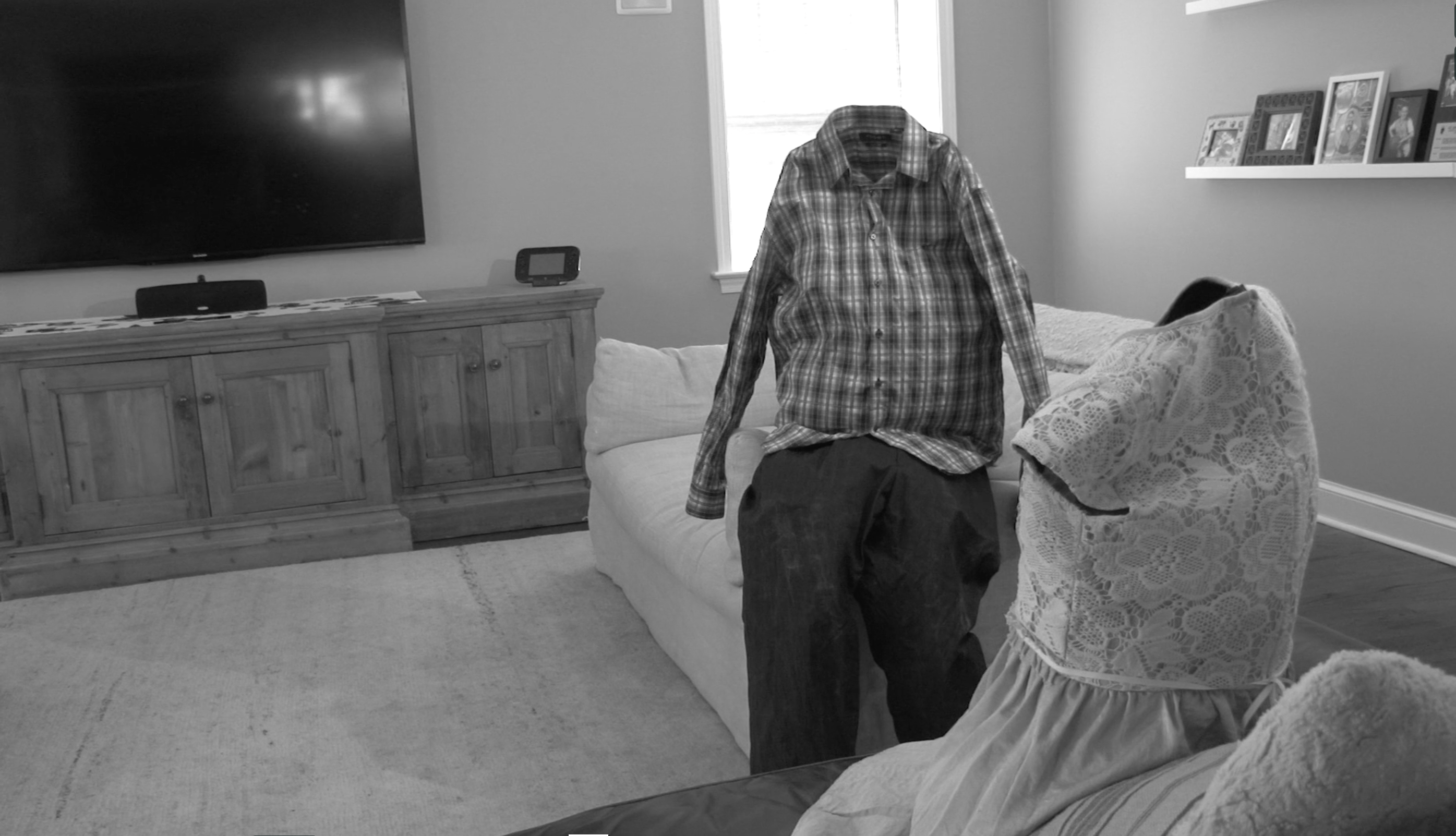
An interview with Kathryn Amrhein, MSP Master of Arts graduate (May, 2016)
Graduate Committee: Prof. Laura Zaylea (Chair), Dr. Jan Fernback, Dr. Kristine Weatherston
–
Introduction by Prof. Laura Zaylea:
Kathryn Amrhein’s final MA project, Clothes for Friends, is an interactive narrative about a woman who interacts only with articles of starched clothing. There are no other people in this world, only the protagonist and the clothes that stand in for human life, but this doesn’t stop her from arguing with family, finding her boyfriend cheating with her best friend, or talking on the phone with grandma. Told through first-person journal entries and video vignettes, the project combines Amrhein’s love for improv comedy and her explorations into new media platforms, specifically Twine, a platform for interactive writing and text-based games.

View the project here:
https://friendswithclothes.neocities.org/thesis%20(3).html
Amrhein first worked with Twine in an MSP class called Emergent Media Production (“Cybermedia Workshop” at the graduate level), where she also explored Aurasma, a platform for basic augmented reality experiences. Amrhein and her collaborator Ze created a cookbook. Though it looks like any other cookbook from the outside, the images in the book triggered video comedy sketches when viewed through a tablet or smartphone. The chef is highly emotional: Red with anger, green with envy, blue with sadness… his emotions are dictated by the color of the food he is preparing. Again, Amrhein combines improv comedy with new media technologies.
Amrhein presented her final graduate at the MSP end-of-year MA graduate screening. This interview was recorded several days after the screening in May, 2016.
Tell us about the work that you do. Why combine comedy with new media forms?
Entertainment is such a competitive field. So many things have already be done and redone and then redone again, especially in comedy. … It’s so hard to carve out a niche and be original. With all of my comedy (I do improv, sketch, and musical comedy), I try to bring an element of relatability to my work and combining it with some newer media forms was my attempt at doing something different and originality.
How did you get started with improv? How did you get started with media production?
Comedy is something that I’ve always loved. I never thought about it as something that I could actually do until a friend of mine got involved at Philly Improv Theater and convinced me to start taking classes too. That was two and a half years ago, and I haven’t stopped writing and performing since. Similarly with media production, I kind of fell into it. I was bouncing around between a few different graduate programs and when I found the Media Studies and Production program, I knew it was the right one. I love being able to translate a vision that I have in my head onto a screen, and digging down into the details of video editing, and breathing life into the scripts that I write, in a different way than I can on stage.

What is the hardest thing about working with new technologies?
The hardest thing about working with new technologies, I think, is the rate at which other people start to jump on board. I love Aurasma and would augment everything I work on if I thought that other people would engage with it. I am actually working on the alumni magazine for the school I work for right now and I want to try augmenting some of the images in the magazine with videos of the students around school (I work at an elementary school). But it’s hard to justify spending the time working on it when I don’t know if anyone will actually look at it. There is so much cool technology out there; I just want everyone to get on board faster.
The “live” element of improv performance is very different from the prerecorded nature of video; how do these two forms intersect? Are these differences challenging and/or inspiring?
The nice thing about improv is that once a scene is over it’s gone forever. So if it’s a bad scene, that’s a good thing. If I kill it in one moment on stage, it kind of stinks because it’ll never happen again, which is why I also do sketch. I can repeat my good sketches as many times as I want (or until people stop laughing at them). Right now, I’m not working on anything that connects live performance and prerecorded videos, but I think it could be a very interesting experiment. I think it could be fun to have a series of prerecorded shorts that interject within improv scenes, forcing the actors to react, like a prerecorded scene partner. I think the challenge would be practicing the art of acting with video, but keeping the improviser almost in the dark, so that the reactions would be genuine and you would maintaining the spontaneity of improv.
What will you be working on next?
Right now, I’m pretty focused on my musical comedy duo. My partner and I write and perform original music. We’ve done several live shows and now we’re working on filming some music videos, and potentially recording an album as well (that’s still TBD). Maybe I’ll be able to incorporate some new media into those projects!
Both the augmented reality cookbook and the interactive narrative focus on one primary character. Do you often write single character work? What is the relationship between characters and interactivity?
It’s funny, I typically have a hard time writing for less than three people, but the timing of these two projects really overlapped. I wrote 3 of the interactive narrative scripts around the same time I worked on the cookbook. It might be a coincidence or I could have been in a very focused way of writing at the time. When it comes to interactivity though, I do think projects are more successful when the focus is on a primary character. As a user, I find it distracting when there are two many people or things in a mediated world to interact with. The worlds don’t necessarily have to be barren like mine, but I think character driven interactivity, following a singular character, is more enjoyable than plot driven interactivity, following a single story. It’s more work for the author, completely blowing out an entire world, instead of following a series of plot points, but I think it’s more fun for the user.
What advice do you have for people looking to work in either improv comedy or with new media technologies?
I’m always a big fan of telling people to dive in head first, regardless of what they’re interested in experimenting with. You never know what you’re going to like or how good you are going to be at something until you’re swimming around in the deep end and really exploring the world – the world of improv, the world of new media, the world of triathlons (I do those too 🙂 ). I feel like it sounds cliché, but if you’re interested, just do it.
Kathryn Amrhein is the Director of Marketing and Communication at Waldron Mercy Academy in Merion Station, PA.
More of her creative work can be found at: http://www.kathrynamrhein.com/